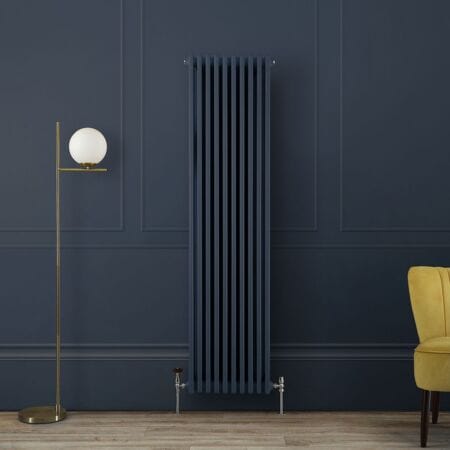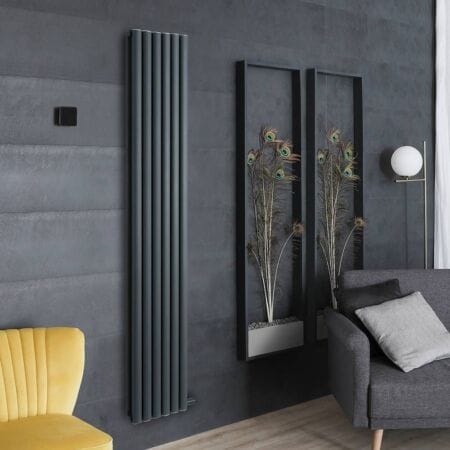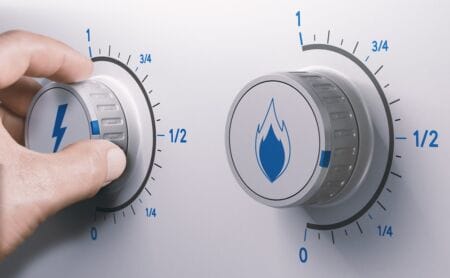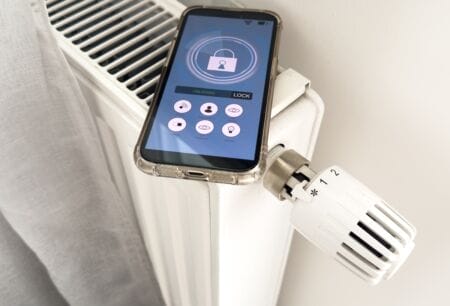Contents
ToggleWhat we'll cover...
The ways to properly work out an appropriate level of BTU output for a specific area.
How to balance heat output for specific spaces
Perhaps a somewhat unusual analogy, but shopping for a radiator can feel a bit like speed dating. There are loads of attractive options, but if the chemistry’s not right, things are going to get uncomfortable. It’s essential to get the BTU vs room size balance correct. Too small, and you’ll be shivering in your slippers. Too big, and you’ll be sweating like it’s July in Seville.
So how do you find a radiator that’s the perfect match for your room? This article will explore the best ways to work out how to align BTU requirements with the room you are looking to heat.
What is a BTU (and why should you care?)
BTU stands for British Thermal Unit. It’s a measure of heat output, and more specifically, how much energy your radiator needs to heat a room to a comfortable temperature.
Think of it like radiator matchmaking: the BTU tells you whether your heating setup is a good fit for the room’s size, shape, and heat loss potential. Go too low and you’ll never feel warm enough. Go too high and you’ll be wasting energy and space.
And in today’s world of rising energy costs and sustainability goals, picking the right-sized radiator isn’t just good for comfort – it’s essential for efficiency too.
Which designer radiators will you swipe right on?
How to calculate your room's BTU requirement
You don’t need a maths degree or a crystal ball. Just some basic room measurements and a good online BTU calculator. But here’s what generally gets factored in:
- Room size (length x width x height)
- Window size and type (single or double glazed)
- External walls (more walls = more heat loss)
- Room usage (bathrooms typically require more heat, for instance)
- Flooring and insulation levels
- Ceiling height and air circulation
Once you’ve found your number, you can begin to browse trendy radiators that offer a matching or slightly higher BTU output. Better to go a little over as opposed to falling short, especially in rooms with poor insulation.
BTU ranges by room size (Rough guide)
Here’s a quick cheat sheet to give you a general sense of what you might need:
- Small cloakroom or WC: 400–1000 BTUs
- Small bedroom or office (approx. 3m x 3m): 2000–3000 BTUs
- Medium bedroom or lounge (approx. 4m x 4m): 3000–4000 BTUs
- Large living room or open-plan space (5m x 6m and beyond): 5000–6000+ BTUs
- Kitchen-diners and high-traffic areas: 4000–7000+ BTUs (kitchens are typically cooler due to ventilation)
Always use a proper BTU calculator for accuracy. Guessing only leads to disappointment (and chilly toes).
Can I use more than one radiator?
Certainly so. In fact, it’s often better to split the required BTU between two or more radiators or heated towel rails, especially in larger rooms. This provides a more even level of heat distribution and prevents cold corner spots.
So, if your living room needs 6000 BTUs for optimal comfort, you could invest in a pair of radiators that provide 3000 BTUs each, placed on opposite walls or in strategic locations like underneath windows. Our guide on where to position a radiator can help in this regard.
Using multiple radiators also helps your heating system warm up faster and can prevent a single radiator from being overworked.
Our guide on vertical or horizontal radiators can help you decide on the ideal orientation for your heating choice as well.
Other factors to consider
- Ceiling height: Taller rooms require extra heating power. Heat rises, after all.
- Furniture: Don’t hide your radiator behind a sofa or wardrobe – this will block the transportation of heat.
- Radiator placement: Beneath a window or on an external wall are the best options for airflow. This kind of radiator positioning will create a barrier against draughts and help to circulate warm air more evenly.
- Window dressings: Heavy curtains? They may trap heat and reduce efficiency levels. If your radiator is situated behind curtains, consider shorter or open-sided designs.
- Room insulation: Poorly insulated homes will lose heat at a faster rate. Factor in insulation levels to avoid under-specifying your heating.
- Usage patterns: A home office that only gets used in the morning? You might get away with lower output and faster-heating styles such as aluminium radiators.
Radiator types and their BTU strengths
Different radiator styles and materials can affect how much heat they give off:
- Aluminium radiators: Heat up quickly, making them ideal for spaces that need fast, responsive heating. Perfect for small rooms, offices, or zones with smart heating controls.
- Steel radiators: Retain heat well and are widely available in both modern and traditional designs.
- Cast iron radiators: Slow to heat, slow to cool. Cast iron radiators are brilliant for high-ceilinged rooms or spaces where long-lasting warmth is more important than speed.
Panel type matters too:
- Single panel: Expect a lower heat output, but a slimmer profile with single panel radiators.
- Double panel: Double panel radiators provide a higher BTU output. They incorporate a thicker profile but are ideal for rooms that require more warmth.
- Double panel plus convector fins: Maximum heat output delivery from a relatively small footprint.
Meet your perfect radiator match with BestHeating
A radiator isn’t just a heating device – it’s an investment in long-lasting comfort. And getting the BTU on point is your golden ticket to a room that stays snug without wasting energy or overpowering the space.
Measure up, check your BTU requirements, and shop smart to find your perfect radiator match for your interior style. Don’t forget to think about insulation, layout, and the lifestyle of the room too. You can find expert tips on how to fit the radiator into your space in our ultimate radiator placement and sizing guide.
Let us know which radiator you fell in love with in the comments section below, or by reaching out to us on Instagram, Facebook or X.
John is a Research Specialist for the Best Heating Advice Centre, where for over nine years he has dedicated himself to demystifying home heating for our customers. He specialises in creating clear, data-driven guides and how-to articles by collaborating directly with our team of certified heating experts and product engineers.
His work, built on a foundation of journalistic research, has helped millions of readers make confident and informed decisions about their home heating. When he’s not breaking down the heat output differentials from radiators to heated towel rails, John fancies himself as a fine football and music connoisseur.








